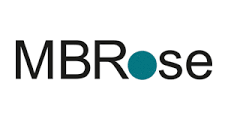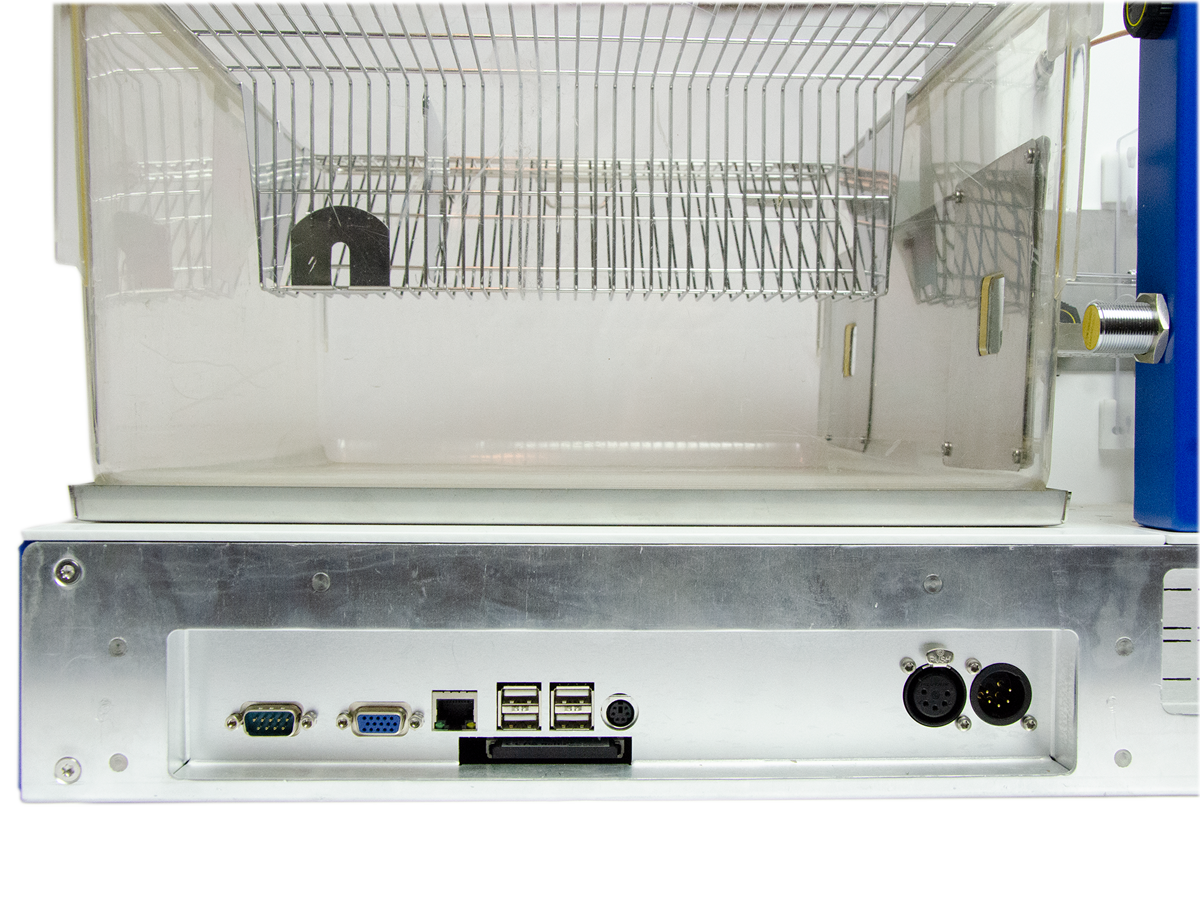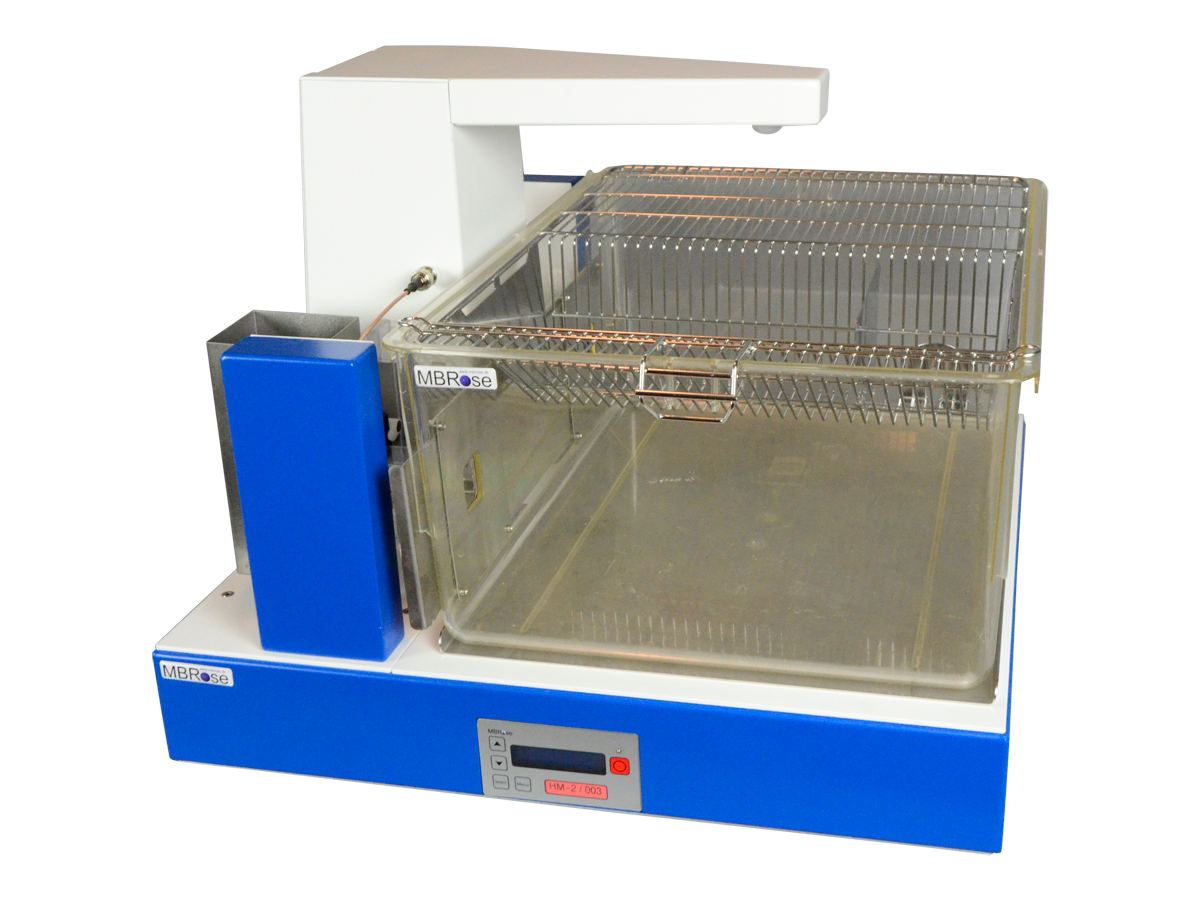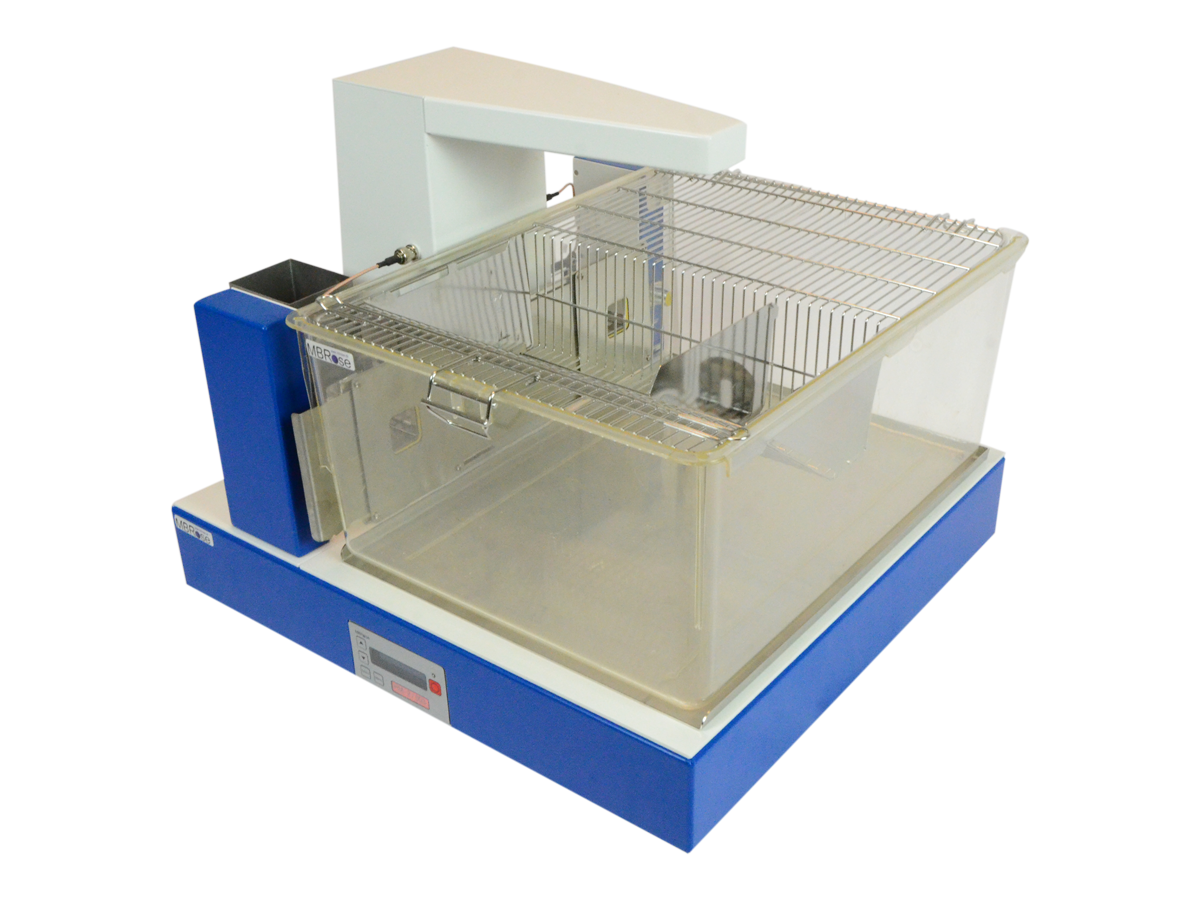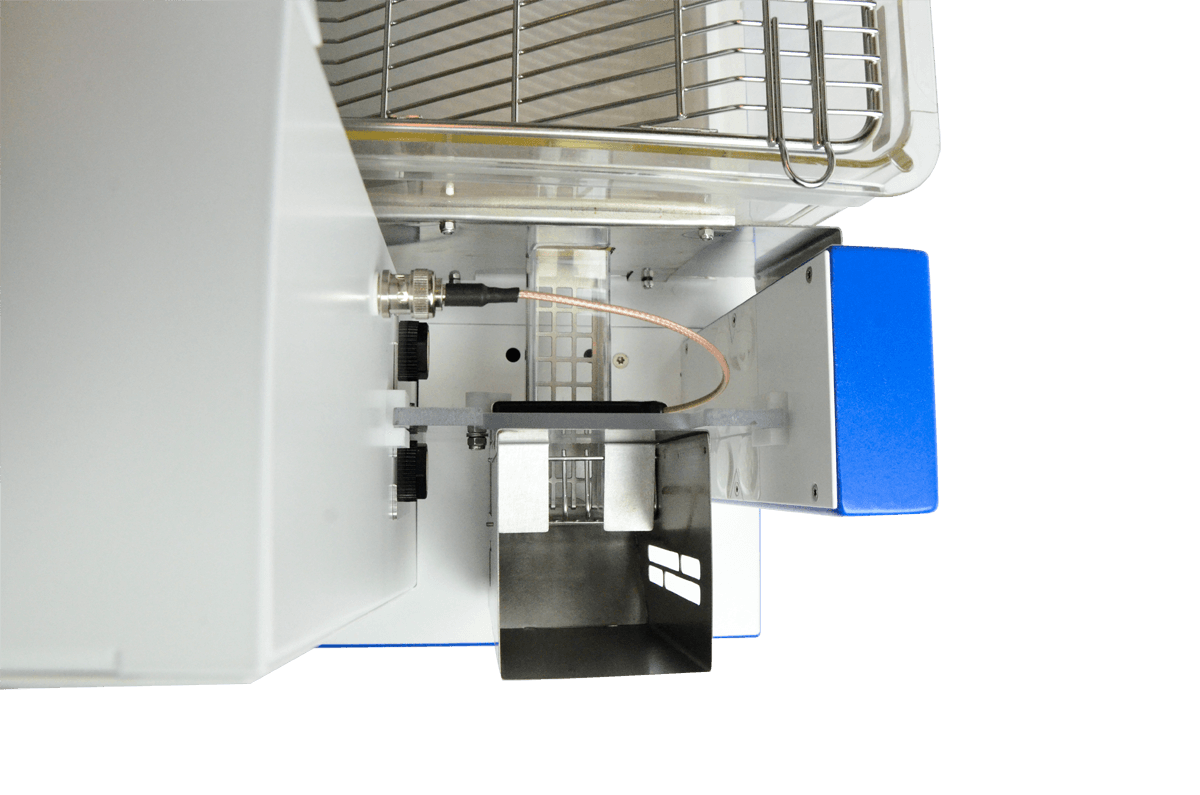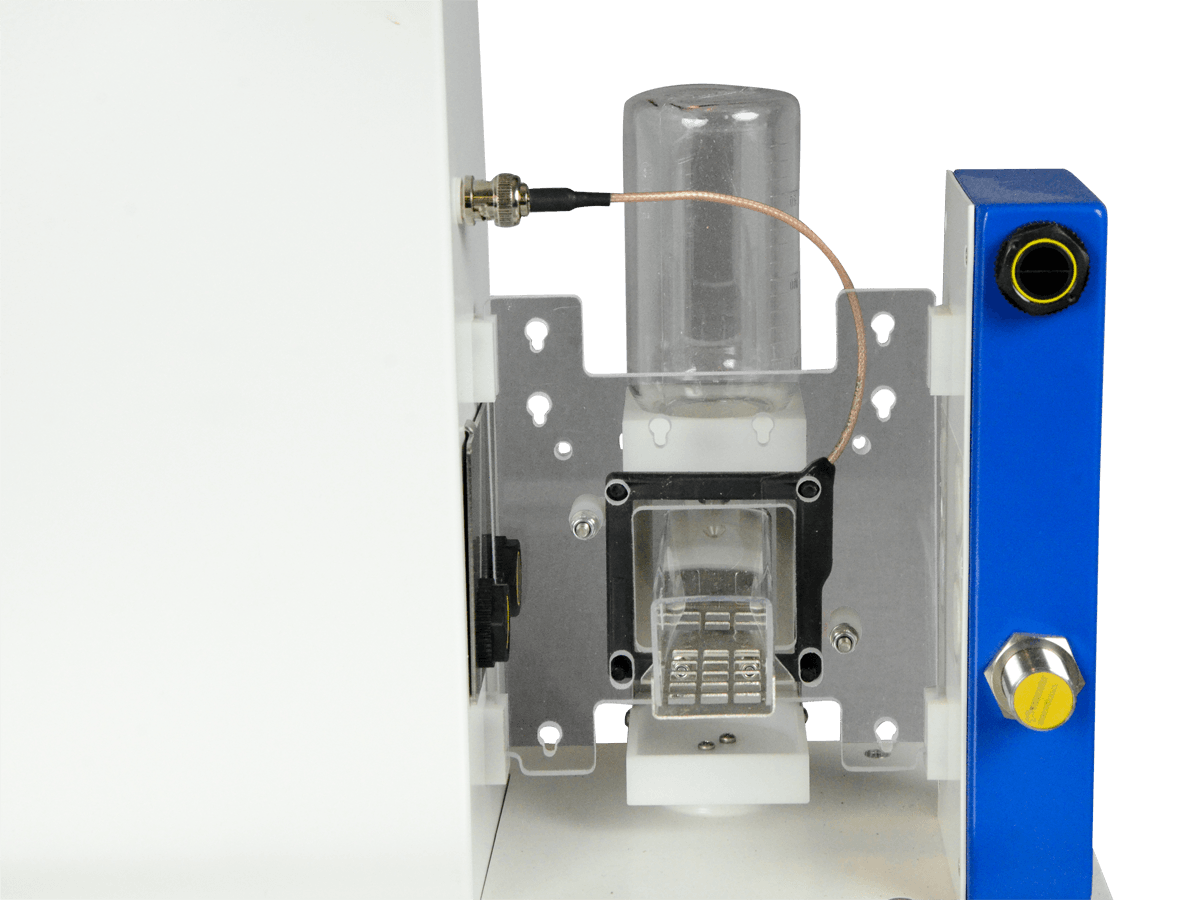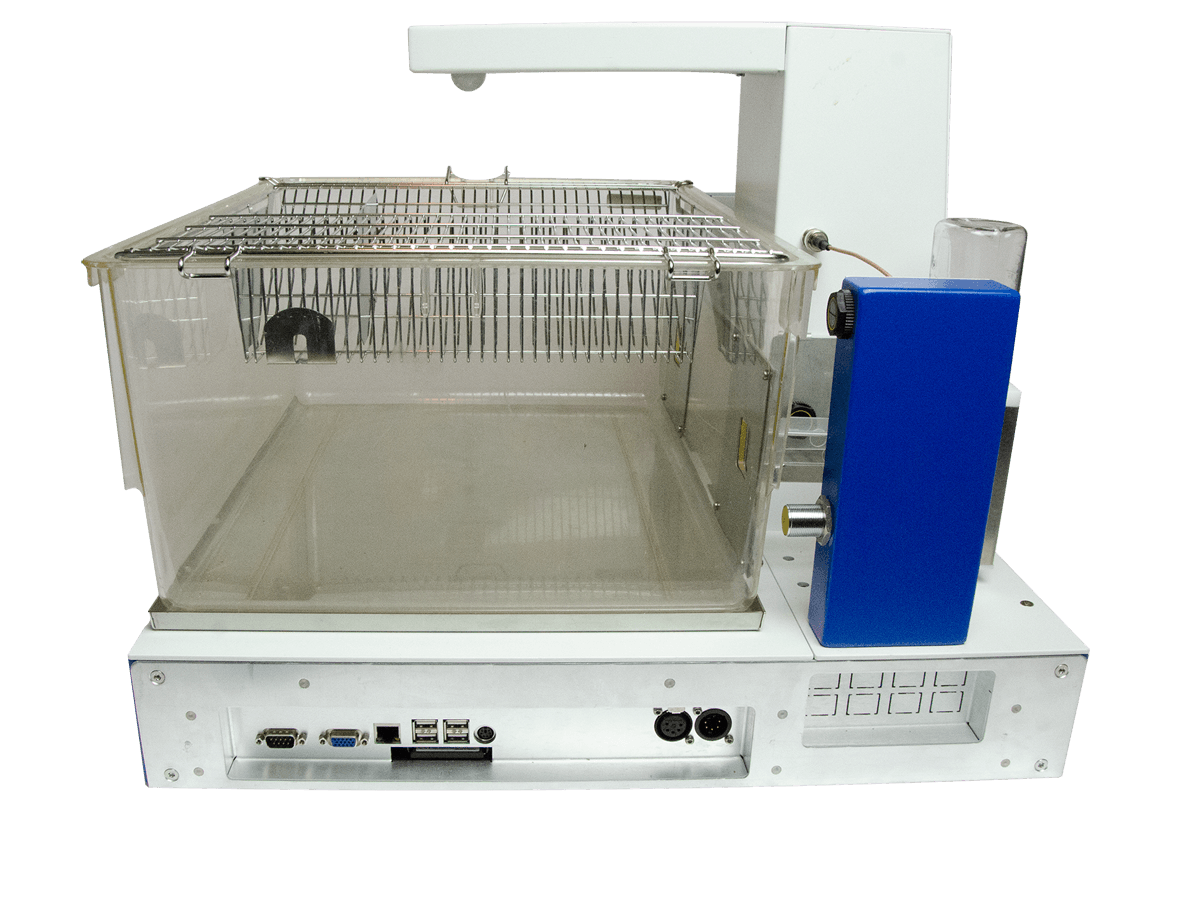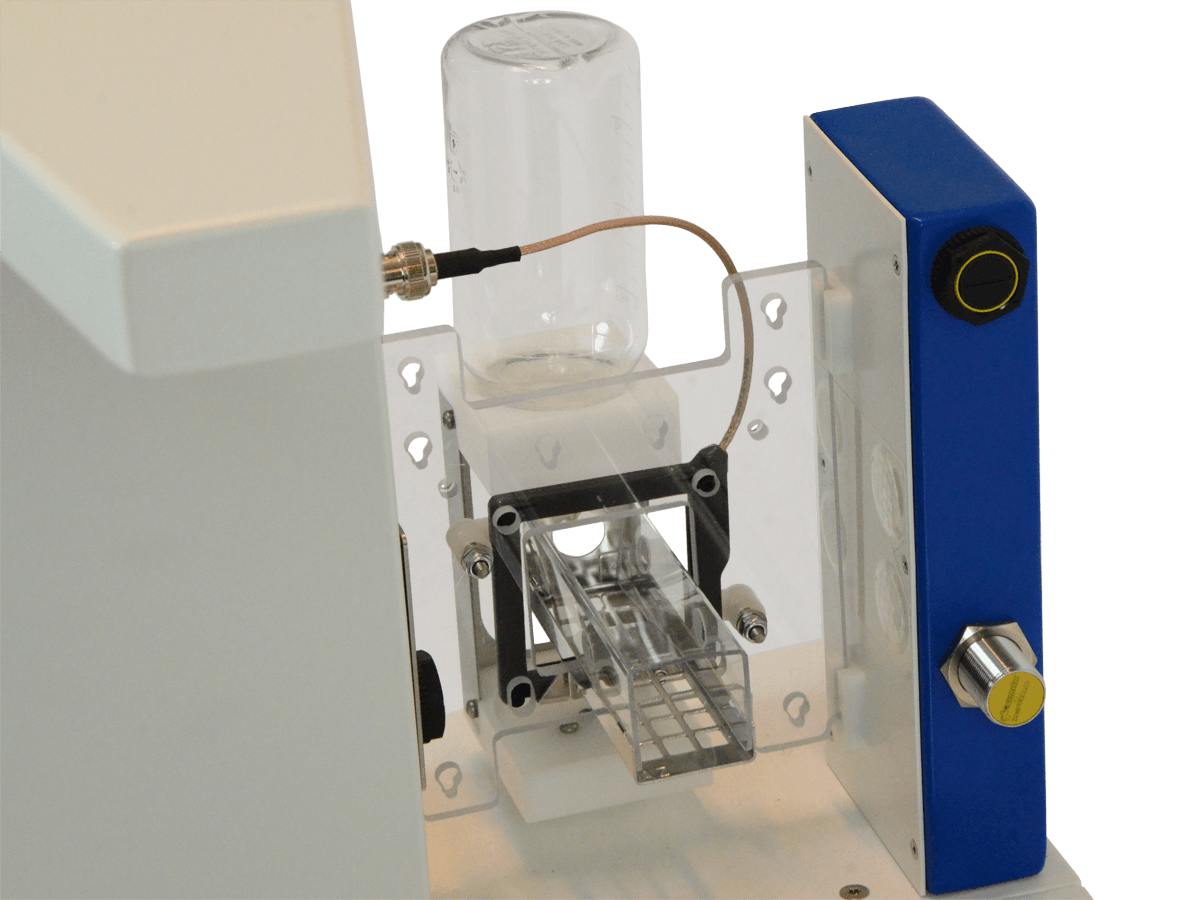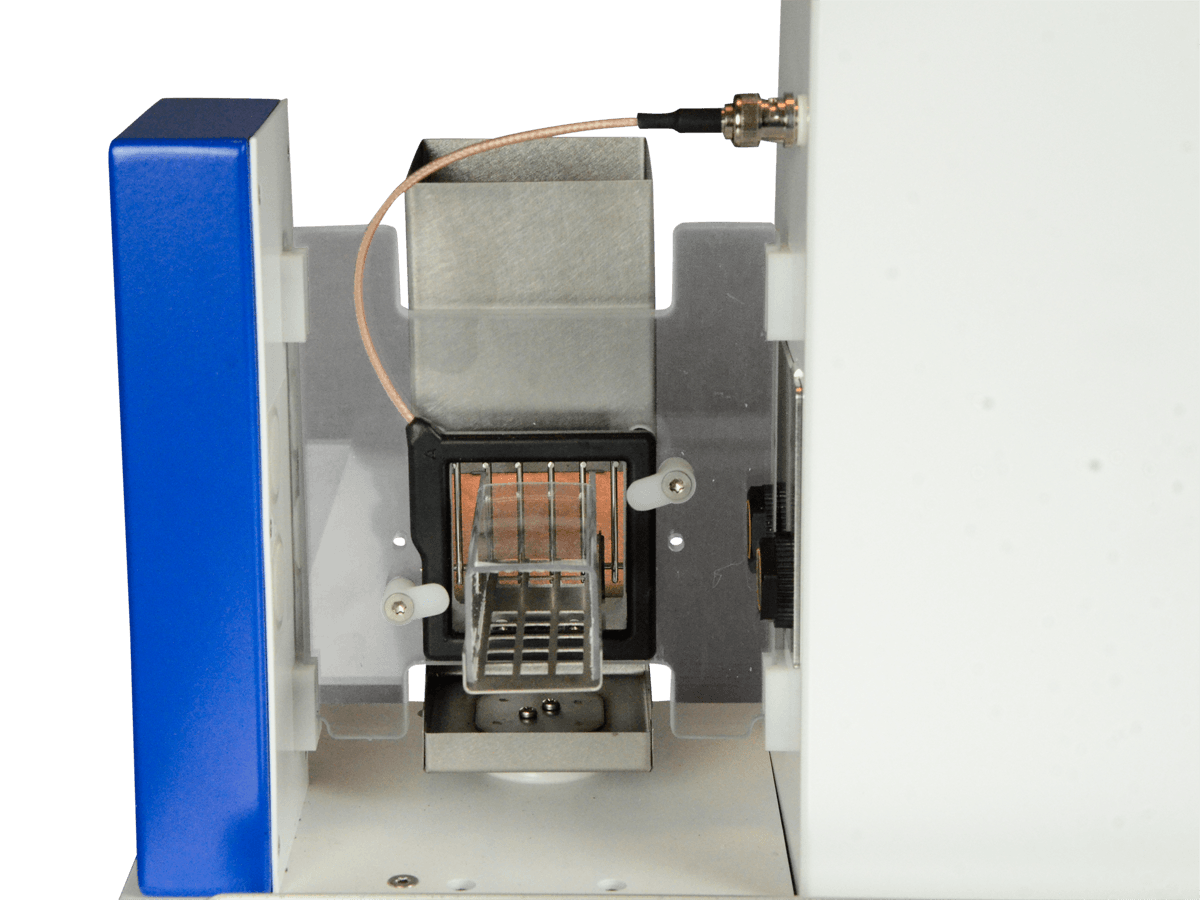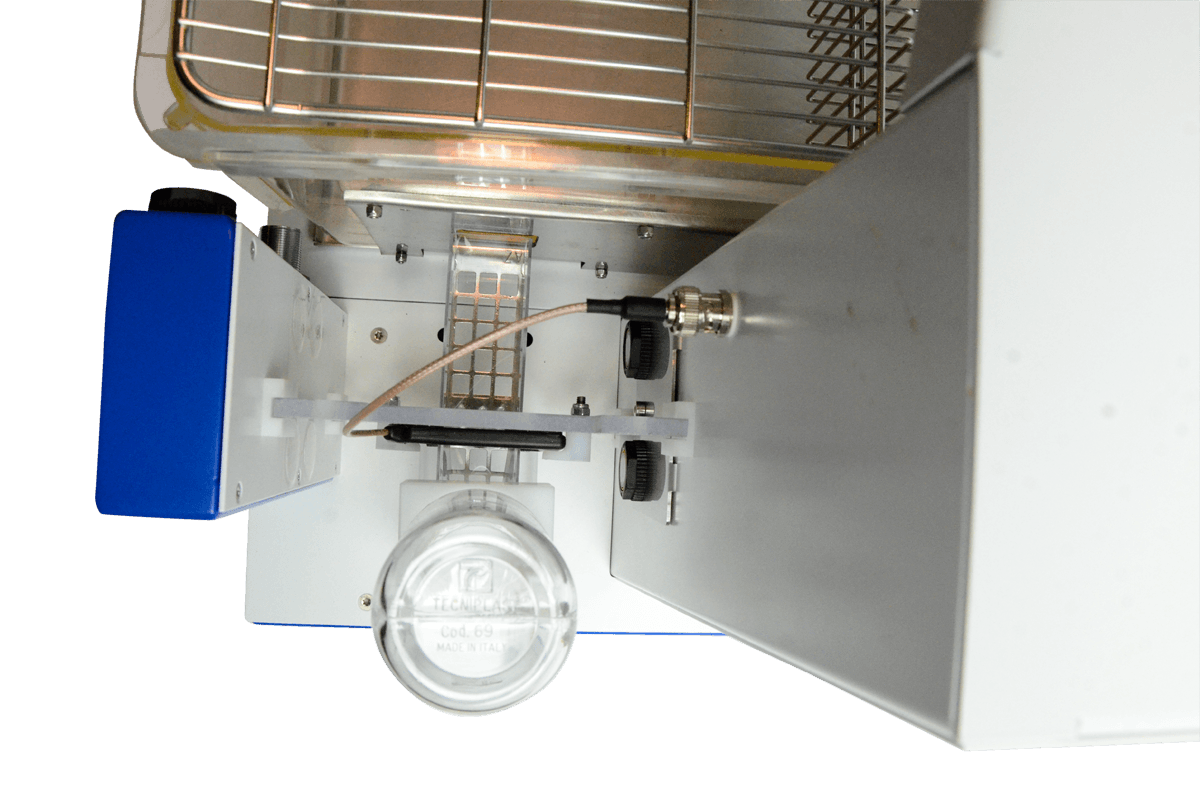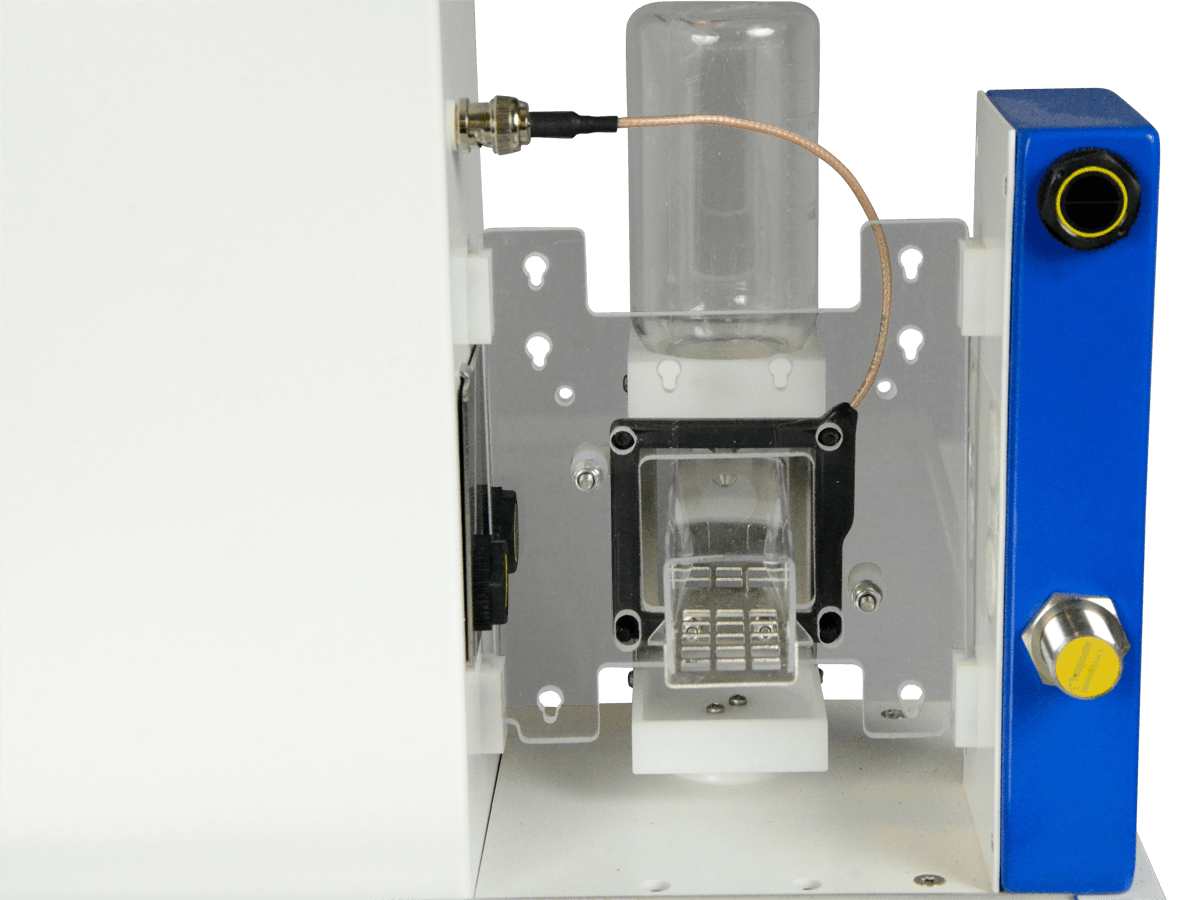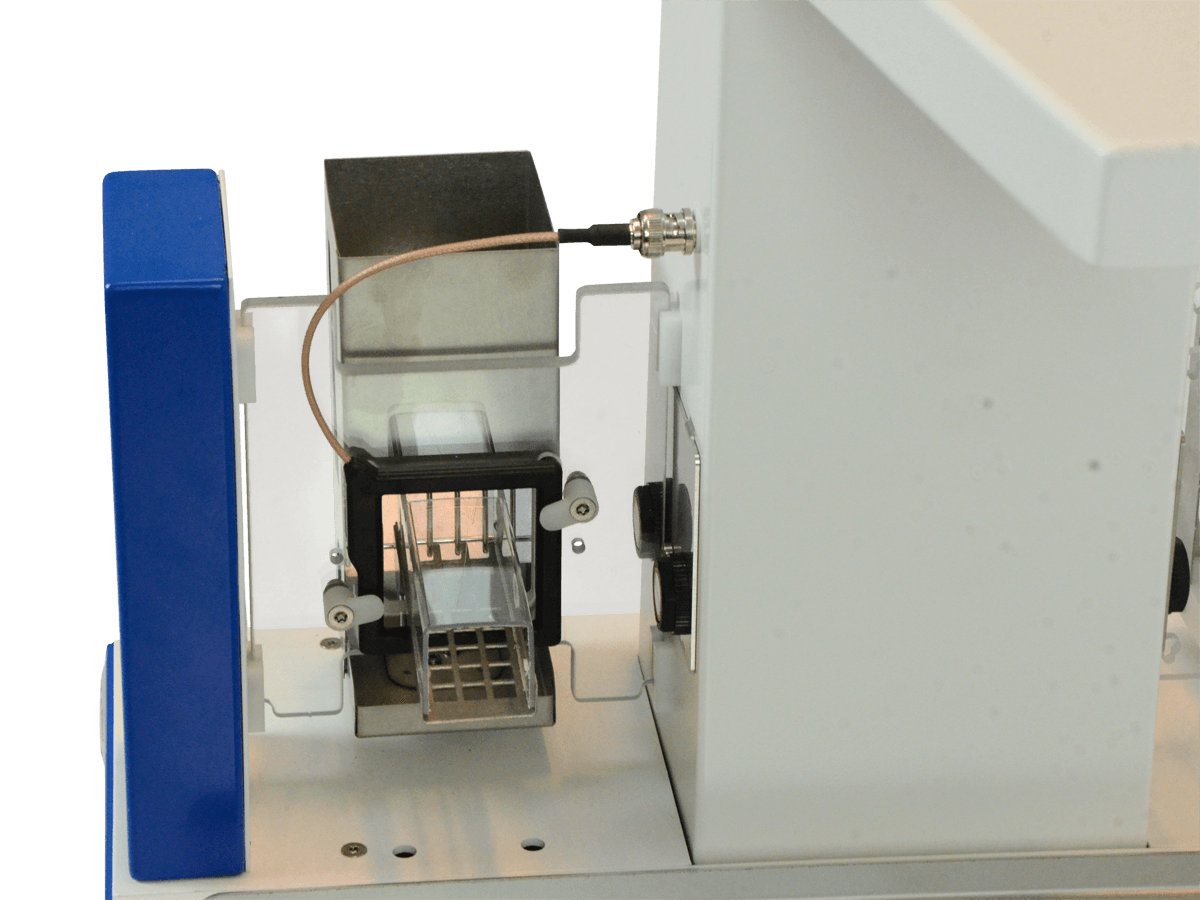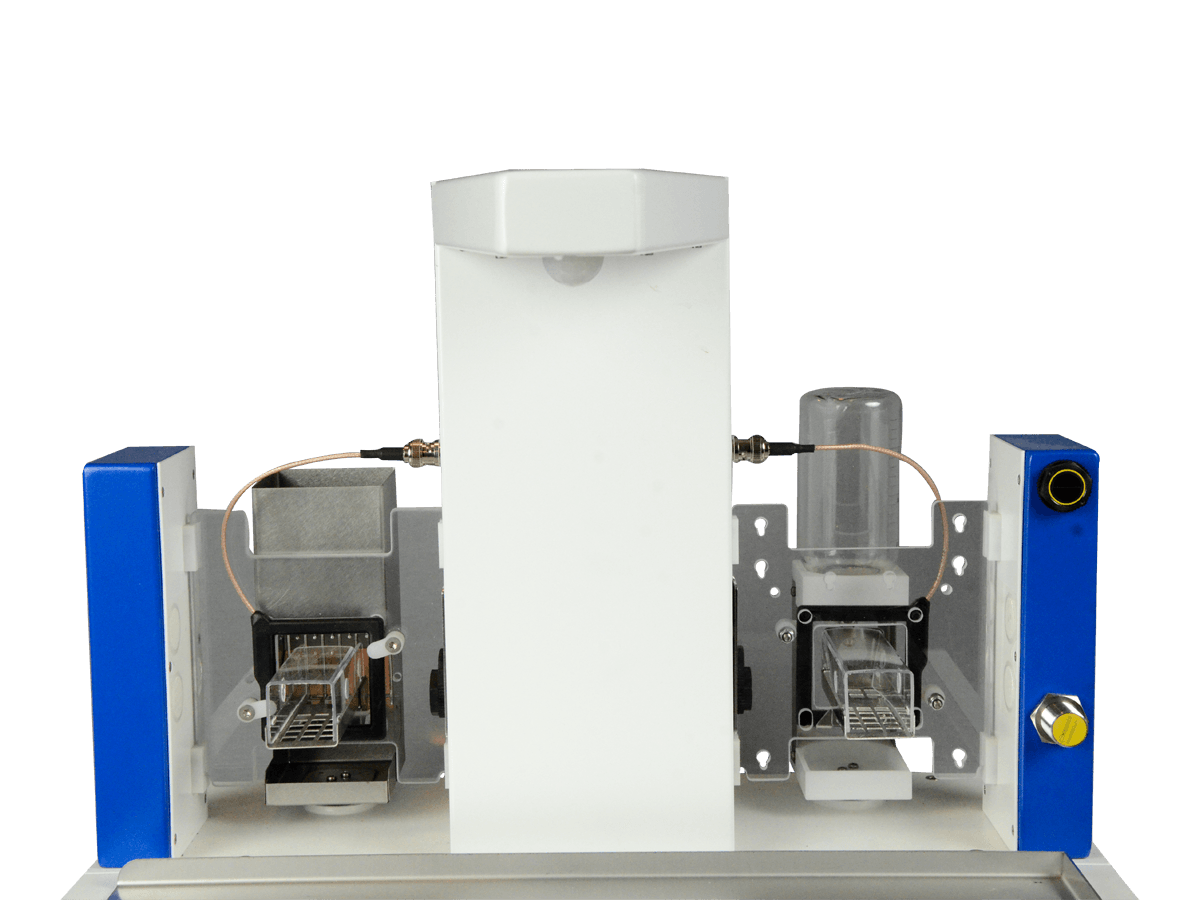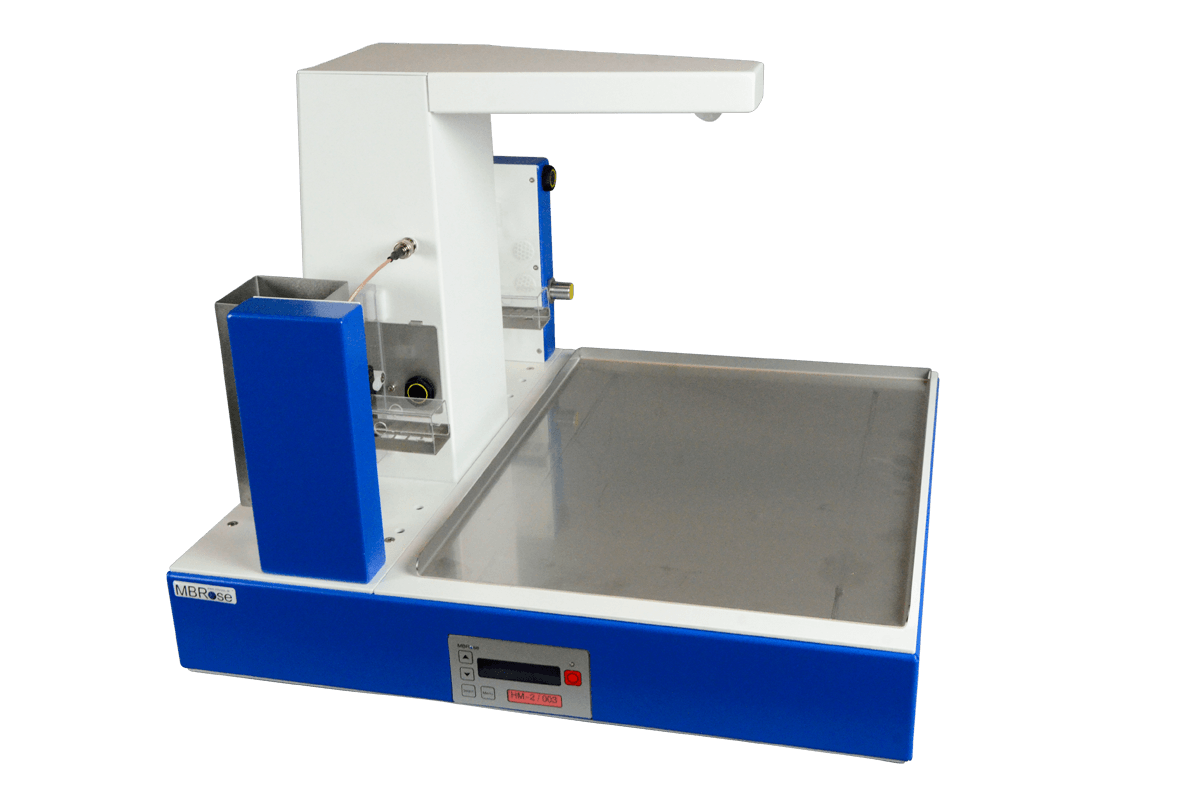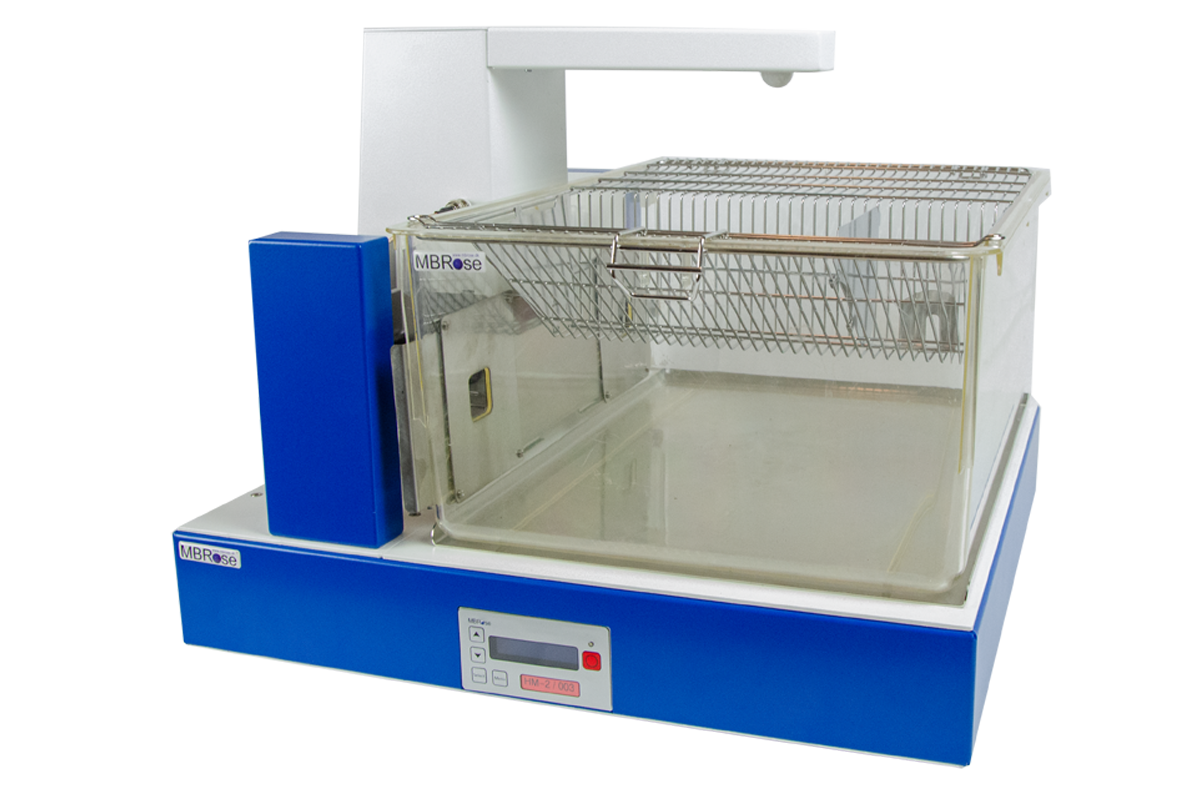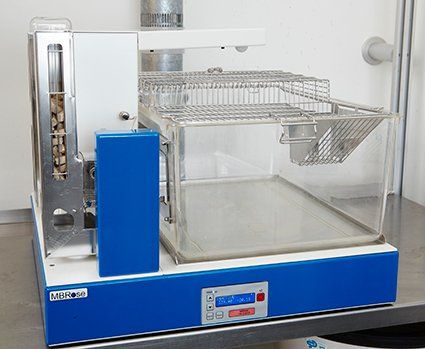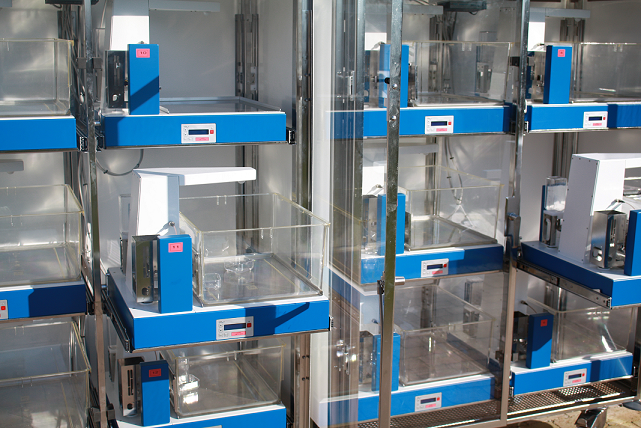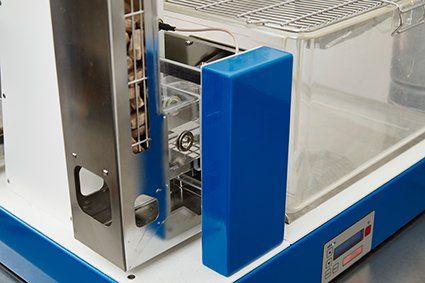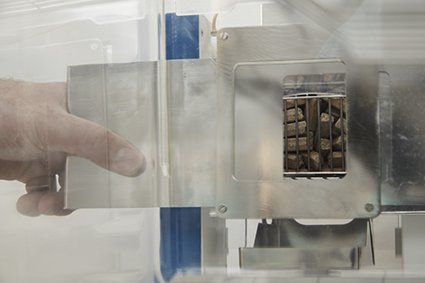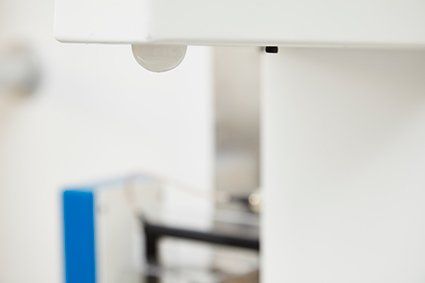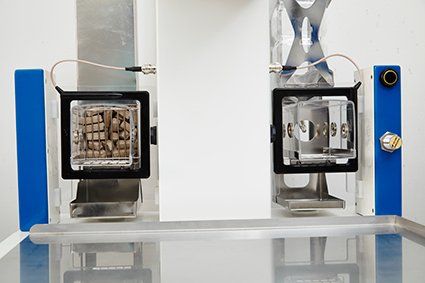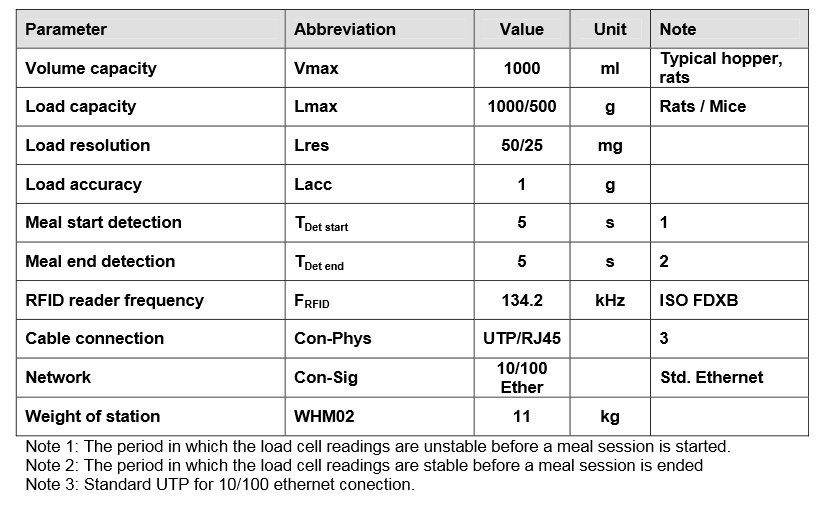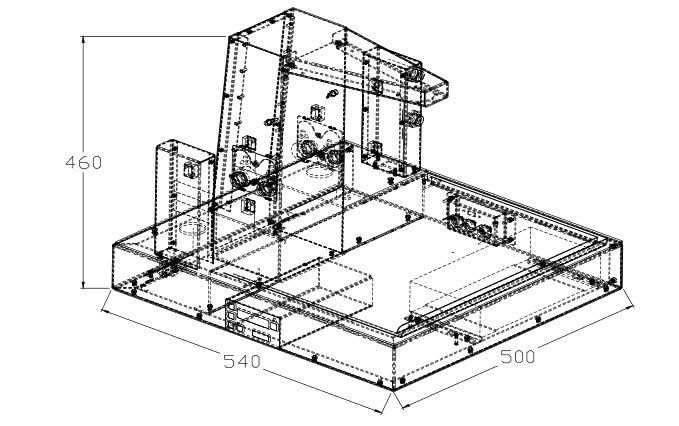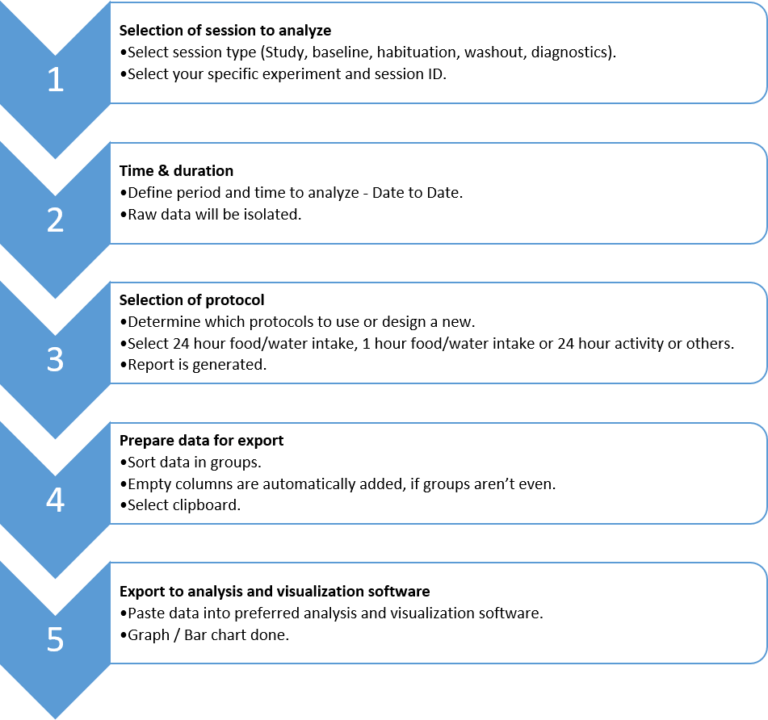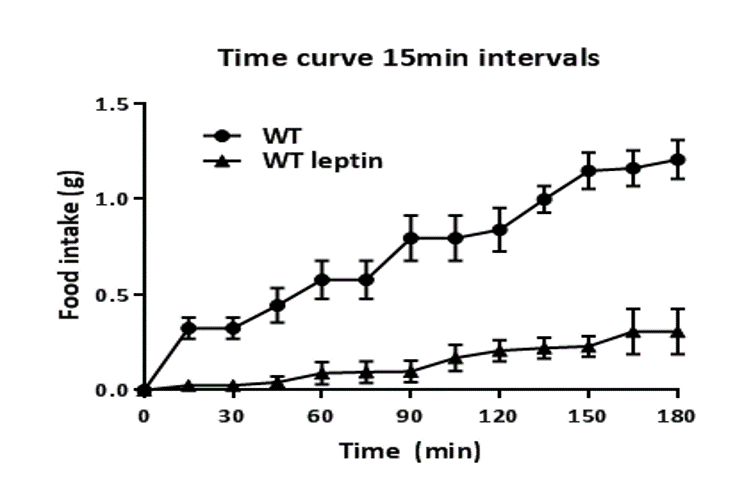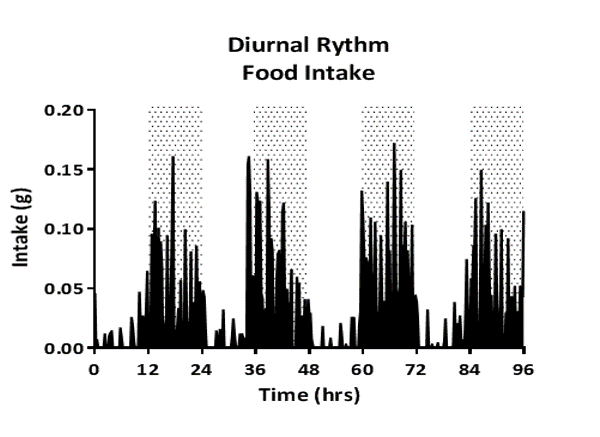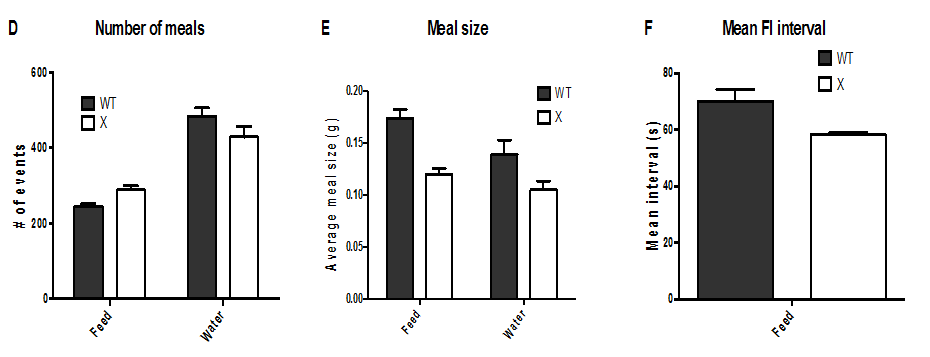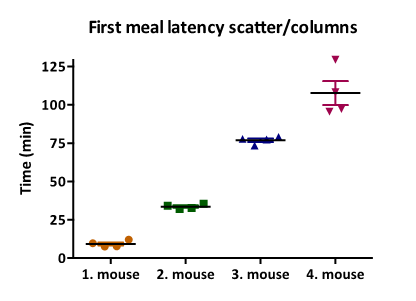HM-2 Feed and Liquid Intake
Introduction
The HM-2 system is the only online food/water intake and activity monitor on the marked that continuously monitors feeding and drinking activity in two independent channels (e.g. feed and drink) in group-housed rodents.
The channels has been designed for low spillage, for high standards of hygiene, and for ease of operation and cleaning. The feeding and drinking data is collected without human intervention.
The system record events with a time stamp in millisecond, the start time of each meal, the amount of food consumed, the duration of the meal, and the finishing time. Activity is monitored on the cage-level and gives you a circadian rhythm of the social group. Setup configurations allow the researcher to establish the parameters for the experiment, study and session in advance.
The system can operate with or without refilling the feed hopper and water bottle, due to the event based system. It allows feed intake data to be collected automatically without disturbing the animal’s normal eating behavior.
Key features
- Individual monitoring of food and water intake in group-housed animals
- PIR activity monitoring
- Control of spills and evaporation
- Hygienic and cleaning friendly
- Simple cabling
- Uses standard Techniplast® polycarbonate cages
- High Throughput system
- WS-1 – Weight station comes with the system
- Event-based data acquisition
- Robust system, immune to network failures
- Results available during experiment
- Flexible data mining tool
- Tailored racksystem possible
WE WOULD LIKE TO HELP YOU
We are ready to help you with questions or challenges within
systems for food and water intake for socially housed mice or rats
CALL US TODAY
+45 20 72 12 18
The HM-2 system
The most basic form of setup of the HM-2 system consists of one HM-2 station, WS-1 weigh station and a computer with the HM software installed.
The computer is used to control and monitor the system. This is obtained by the user for this to conform with the local network. MBRose will install the HM software on this and setup the synchronization from the HM-2 station to the computer. Since every facility is different the HM-2 system is designed for maximum flexibility. This is also the case with the computer, which don´t need to be positioned near the HM-2 station all the time. You can use a laptop and just bring it along when needed. When connected it will synchronize the one or all stations.
The WS-1 weigh station is another key part of the system. This is used for registering the RFID tagged animals into the system. In running session the WS-1 can be used for body weighing and dose calculation aid from the body-weight.
If you prefer easy access from office to the HM-2 system you can use the client server solution, where the HM database will be installed on a
corporate server. This makes it possible for all involved parts to access data from their own defined workplace.
If you want the system to be more space efficient we deliver the HM-2 stations in a build-in rack solution. This can be ordered as a 6, 8 or 9 station setup as standards. The racks can be open or closed and installed with ventilation hoods. All are delivered with 100% drawers to manage each station and all racks have wheels.
The HM-2 station
The station itself consists of a base station, detectors for system health, PIR activity sensor, a cage and two identical channels.
The base station is home to the embedded computer, that allow millisecond precision on all recorded events, but also to drive all detectors and load cells. In the front of the base station is the display fitted. This reveals the station status and can be used when running hardware diagnostics.
Two identical channels is placed on the station. These consists of a food hopper and/or a water bottle, load cells, detectors for detection of animals, an antenna for electronic identification, channel entrance(re-sizable for mice). The channels can be configured with feed/water setup or water/water, feed/feed for preference studies.
A couple of detectors for system health status. One detector is to indicate if the cage is correctly placed. This will be shown as 7 different pictograms in the software. Another detector is telling if the channels are blocked by the metal plate, that serves to block the channels when doing husbandry, service etc.
The PIR sensor is sensing movement in the cage by heat detection. There are no individual identification associated with this, so you get the activity level of the cage.
Finally a bit about the cages that can be fitted to the HM-2 station. Most standard cages can be used and these will be modified with with channel entrances for the selected species. The most common is the Tecniplast 1500U eurostandard type IV S (480x375x210 mm.) 1500 cm2 or 232,5 in2. This can be used for both rats and mice, but is the modified for each species. The largest cage we have used is the Tecniplast 1354G with floorspace of 1820 cm2 or 282,1 in2.
RFID – Radio-frequency identification
Individual identification of group-housed animals are identified using ISO FDXB RFID tags, e.g. DataMars®, Pet-ID®, e-Vet®. Tagging is a safe way of identifying individual animals and integrated with MBRose weigh stations and antennas, it can secure a fully automated tracking of animals through the entire experiment.
The microchips are delivered in an injection tool. At approximately 7-12 millimeters in length by 1.4 millimeters in diameter the microchips can be simply and humanely implanted subcutaneously in the neck of an animal. The tool is designed to be minimally invasive, however this routine might require some skill to handle the animals while injecting. Other users prefer to anesthetize the animals, so you have more tranquility to place the chip correctly. How to insert these microchips are very different from place to place, so this is for the user to decide.
The Channels
The HM-2 station have two identical channels, which can be configured to different setups like feed/water, water/water or feed/feed. This makes it possible to do preference studies in the system.
Photocells are monitoring the channels and detects animals inside these. When detection is made by beam breaks, an electronic identification is done by an antenna and due to load cell instability a meal event is registered as raw data and stored locally on the HM-2 station until connection is made to a computer and/or server. A number of parameters and thresholds are preset for normal operation or may be individually configured for in depth meal analysis.
A tray is suspended in the bottom of the food hopper and the water bottle. These trays picks up spillage, which is automatically deducted from the meal event. This gives you a very precise intake.
Evaporation from the water bottle is also something not to worry about. Due to the event based system, that measures the channels before and after an animal entry you do not have any evaporation.
Software
The software that are delivered with the HM-2 system is the HM02Lab, the HMBase and the HMView.
The experiments, studies and sessions are centrally controlled by the HM02Lab application running on the designated PC in the animal facility.
The data collection software ensures robust storage of raw data in the HMBase SQL database. The data view is available in HMView that presents the data in an easy 5 step process from raw data to graph at the researchers office desk. Data are extracted via predefined and custom made filters to your preferred data analysis and visualization software like SigmaPlot®, Graphpad Prism® or Excel®, for in-depth correlation with other research.
Client server solution
This is one of the key stones behind the HM-2 system. The client server solution is made for easy access for all involved people in an experiment and to secure valuable raw data.
The client server solution spans at least 3 environments, the animal facility, the office and the server room.
The HM-2 system is usually placed inside the animal facility, which can be a challenge for some researchers to reach, due to strict access procedures etc.
With this solution the researcher can sit in the office and design the experiment and submit this to the HM database on the corporate server. Now just send an e-mail to the animal facility manager or responsible technician and let them handle the registration of the animals, experiment initiation, husbandry, body weighing, dosing procedures and ending the experiment. The researcher can stay in the office and follow the progress, make changes and even begin analyzing the data before the experiment is done.
Other researchers can use the system at the same time. They might want too submit their own project or analyze older data.
What is important to understand within this process, is that all HM-2 stations have an internal HM-database. All data from the individual stations are stored locally in these. When connected through an Ethernet cable, each station synchronizes with the installed HM-database on the corporate server.
When data is stored on the corporate server the researcher can access all data or follow a specific study from his/her office.
The technicians take care of husbandry(adding food, water, changing bedding etc.), body-weighing, tagging and initiation/ending of the studies.
A big advantage of placing the database on a corporate server, is the IT-department becomes responsible for backup and maintenance of the database. The valuable raw data is safe and secure.
DOWNLOADS
Specifications
Data may be extracted via filters to SigmaPlot®, Graphpad Prism® and Excel®, for in-depth correlation with other research. Export facilities to corporate database structures are also available on request.
Results
Results introduction
Raw data are stored in the database and made available for review via the Results application. It is worth noting that the database holds the entire amount of logged data and the right way to derive information is through a set of filters that limit and organize the data according to the user needs. Therefore the Results function is a set of organizing filters and report generators, allowing the users to see the data of concern organized for optimal views and export capabilities.
We have build an easy 5 step process from raw data to graph/bar chart etc.
